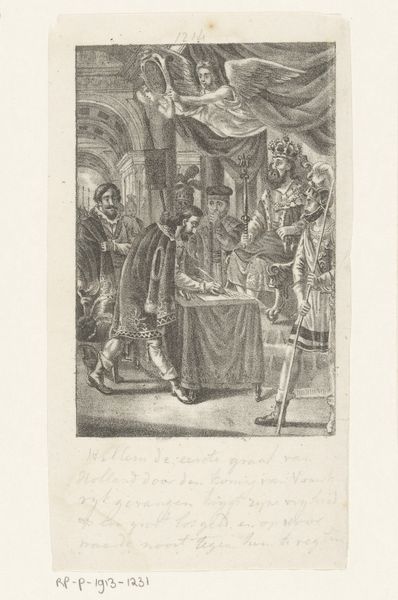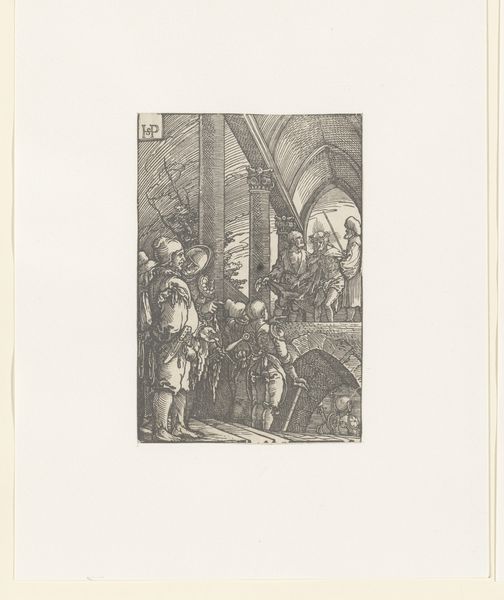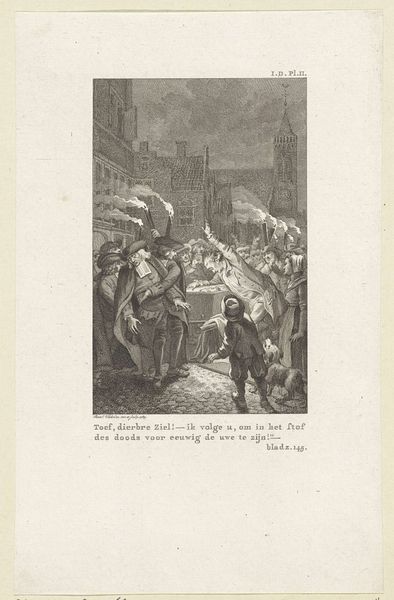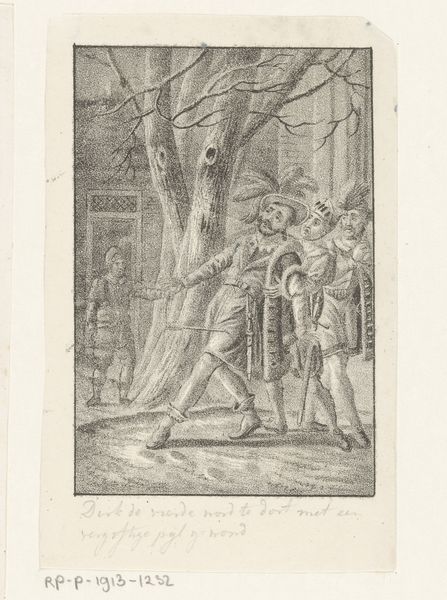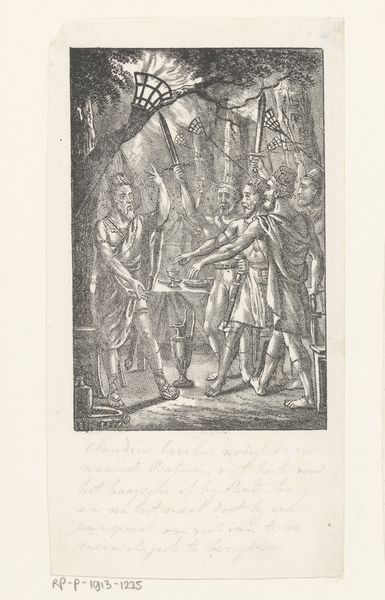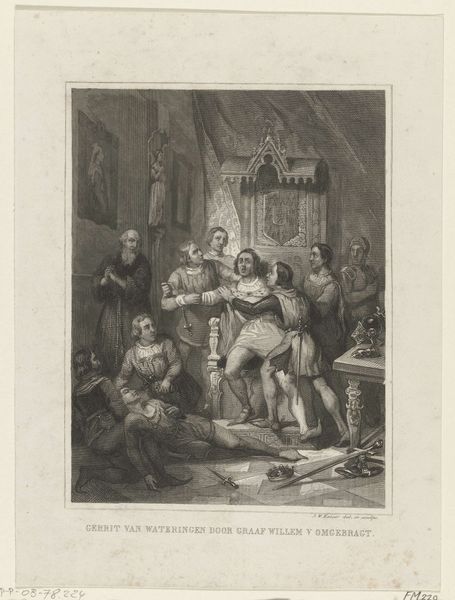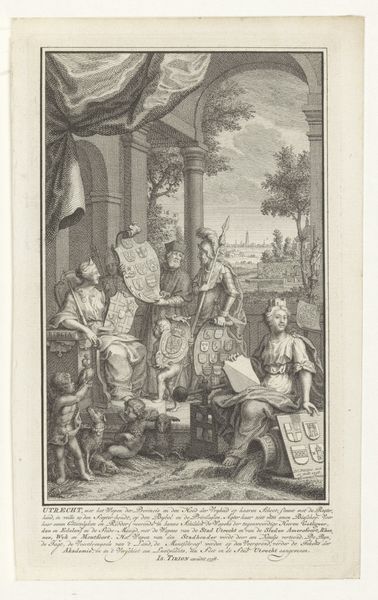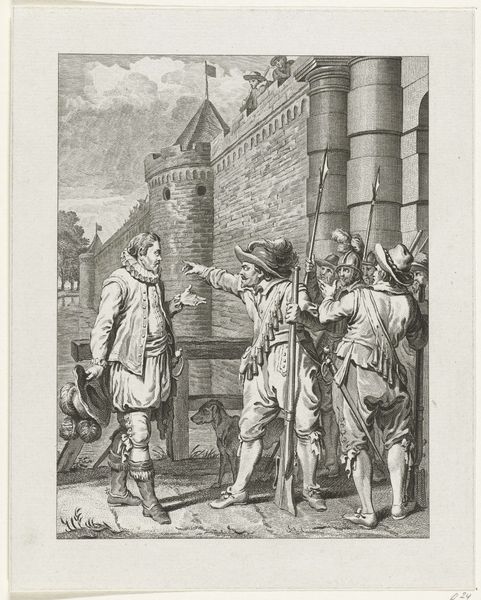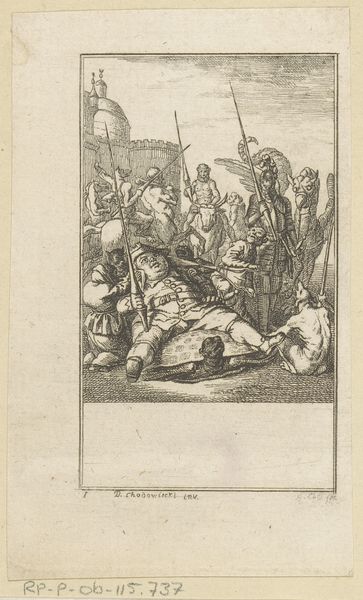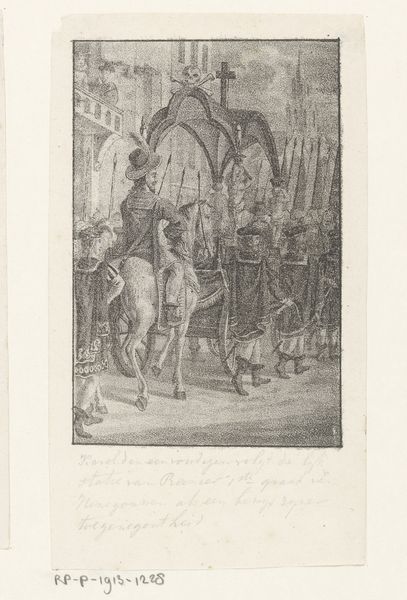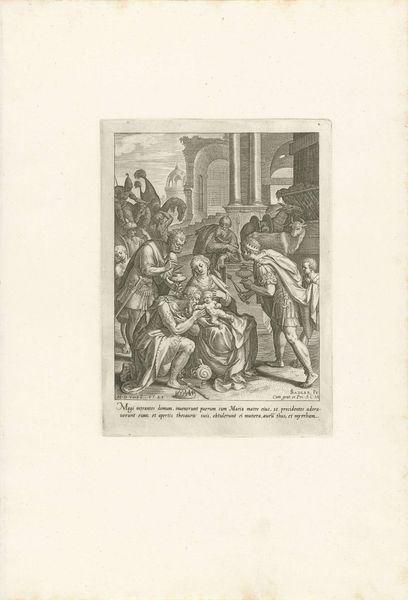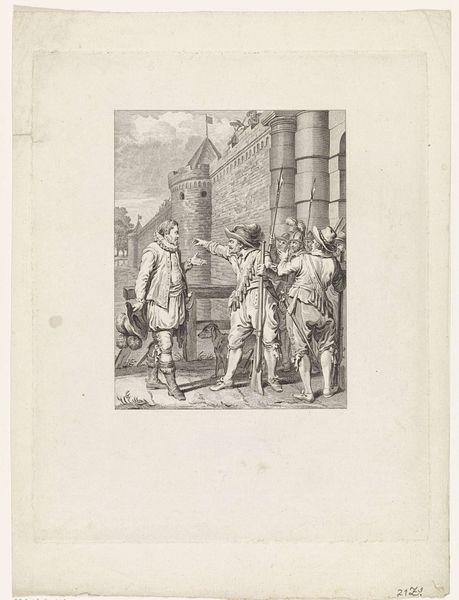
drawing, print, engraving
#
drawing
#
medieval
# print
#
genre-painting
#
history-painting
#
engraving
Dimensions: height 165 mm, width 90 mm
Copyright: Rijks Museum: Open Domain
Editor: Here we have an engraving titled "Graaf Floris V vindt het lijk van zijn vader," dating from sometime between 1809 and 1899. The print depicts a somber scene with figures surrounding what appears to be a body. It's quite dark and evokes a sense of profound loss. How do you interpret this work? Curator: I see this image as a powerful statement about historical narratives and their construction. Consider the figures surrounding the body. Who holds power here? The armored figure, presumably Floris V, embodies patriarchal authority, doesn't he? Think about how the image visualizes power structures within medieval society. Do you see how it might be interpreted through a lens of class and gender dynamics? Editor: That's interesting. I hadn’t considered the gendered aspects. I was focusing more on the depiction of grief. Curator: Grief is present, undoubtedly. But it's also a staged grief, isn’t it? This image participates in the romanticization of historical events and figures, particularly those associated with nobility. We have to consider how such images serve to reinforce specific ideas about leadership and national identity, and who benefits from those ideas. Consider who is included, but more importantly, who is excluded? Where are the peasant voices? Editor: So, it's not just about mourning a death but about solidifying power? Curator: Precisely. It prompts us to question the motives behind representing this event, the artist’s implicit biases, and how viewers throughout history have interpreted it. How does this image fit into broader representations of power in art? What other historical moments are similarly framed to emphasize specific political agendas? Editor: I never thought about historical paintings being so agenda-driven. I learned that artworks, particularly historical scenes, aren’t always objective representations of the past. Curator: Exactly! It is our role as art historians to dismantle that pretense of objectivity, unveiling the complex interplay between art, power, and ideology.
Comments
No comments
Be the first to comment and join the conversation on the ultimate creative platform.
